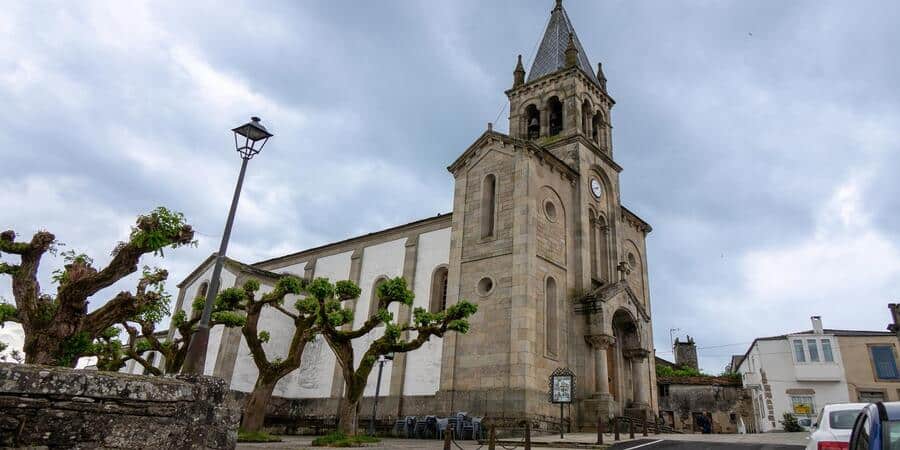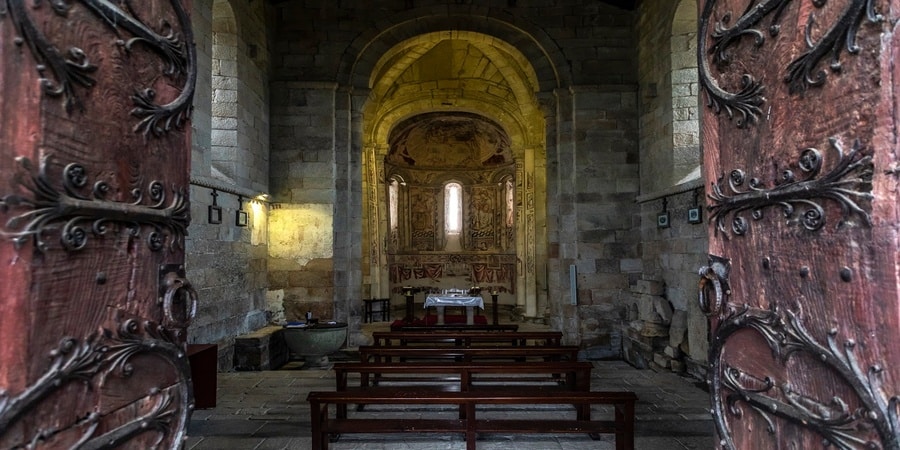The Camino de Santiago is renowned for its spiritual significance, beautiful landscapes, and rich history. While many pilgrims are familiar with the famous stops along the way, hidden gems on the Camino are tucked away in lesser-known towns that offer unique experiences. This blog will explore five hidden treasures along the popular Camino Francés and Camino Portugués routes, focusing on Sarria, Palas de Rei, Vigo and Baiona.
Hidden Gems in Sarria
The Medieval Fortress of Sarria
When you arrive in Sarria, which many pilgrims choose as their starting point for the Camino Francés, take a moment to step off the beaten path and visit the Medieval Fortress of Sarria. This fortress, dating back to the 13th century, is a striking reminder of the region’s rich history. Although only parts of the fortress remain, including the Torre del Batallón (Tower of the Battalion), the ruins offer a breathtaking view of the surrounding landscape.
The site is relatively peaceful, allowing for quiet contemplation before embarking on the Camino. The walk up to the fortress is a pleasant diversion, and from the top, you can enjoy panoramic views that stretch across the Galician countryside.

The Church of Santa Mariña
Another hidden gem in Sarria is the Church of Santa Mariña. This small, ancient church is often overlooked by pilgrims focused on the road ahead, but it’s worth a visit for its simplicity and charm. Though modest, the church’s Romanesque architecture is well-preserved, and the interior exudes a sense of tranquillity.
The church is a short walk from the main Camino path, making it an ideal spot for reflection and prayer. The peaceful atmosphere here offers a perfect opportunity to pause and connect with the spiritual essence of the Camino.

Hidden Gems in Palas de Rei
Pambre Castle
Palas de Rei is a frequent stop roughly halfway through the final 100km of the Camino Francés, yet few pilgrims take the opportunity to explore Pambre Castle. Located just a few kilometres outside the town, this well-preserved medieval fortress is one of the few that survived the Irmandiño revolts in the 15th century.
The castle, surrounded by lush forests and the Pambre River, offers a fascinating glimpse into Galicia’s feudal past. A visit to Pambre Castle is like stepping back in time, with its thick stone walls and defensive towers standing as a testament to its historical significance. The site is relatively quiet, making it a perfect detour for those interested in history and architecture.

The Romanesque Church of Vilar de Donas
Just a short drive or a leisurely walk from Palas de Rei, the Romanesque Church of Vilar de Donas is a hidden gem few pilgrims know about. This small church, built in the 12th century, was once part of a monastery and later became the burial place for knights of the Order of Santiago.
The church’s interior is adorned with beautiful frescoes depicting religious scenes, and the serene atmosphere inside makes it a perfect place for quiet reflection. The surrounding area is peaceful and often overlooked, making it an excellent spot to escape the busier sections of the Camino.

Hidden Gems in Vigo and Baiona on the Camino Portugués
The Monteferro Peninsula in Nigrán
As you travel along the Camino Portugués, consider taking a detour to the Monteferro Peninsula near Nigrán, not far from Vigo. This lesser-known natural wonder offers stunning views of the Atlantic Ocean and the Cíes Islands. The peninsula is crisscrossed with walking paths that lead through pine forests and open up to breathtaking coastal vistas.
The Monument to the Universal Navy stands at the peninsula’s tip, a tribute to sailors lost at sea. This spot offers a perfect sunset view, with the vast ocean before you and the Cíes Islands silhouetted on the horizon. Enjoy the breathtaking scenery as the sun dips behind the islands. The Monteferro Peninsula is a quiet retreat away from the bustling towns, providing a moment of peace and natural beauty.

The Fortaleza de Monterreal in Baiona
Baiona, a historic coastal town on the Camino Portugués, is home to the Fortaleza de Monterreal, a fortress that has guarded the town for centuries. Baiona’s beautiful bay and historical ties to Columbus are well-known, yet the fortress is often overlooked. Pilgrims frequently miss this hidden gem despite its historical significance.
This ancient fortress, perched on a promontory overlooking the Atlantic, is steeped in history. As you walk the ramparts, echoes of past battles against pirates and invaders seem to resonate. The fortress walls whisper stories of fierce conflicts defending the town. The fortress now houses a luxury hotel, yet visitors can still explore its grounds and enjoy panoramic views. Experience the historical atmosphere while wandering through this remarkable site.

The Virgen de la Roca Monument
Another hidden gem in Baiona is the Virgen de la Roca Monument. This impressive statue, built in 1930, stands on a hilltop overlooking the sea and the town of Baiona. The monument depicts the Virgin Mary holding a boat in her right hand, symbolising protection for sailors and travellers.
The walk up to the monument is well worth the effort, as it offers spectacular views of the surrounding coastline. Inside the statue, a staircase leads to a lookout point within the boat, providing a unique perspective of the area. It’s a peaceful spot to pause and reflect on your journey, with the sea stretching out before you.

While the Camino de Santiago is rich in famous landmarks, the hidden gems create unforgettable experiences. Discovering these lesser-known spots often leads to the most cherished memories along the journey. In Sarria, Palas de Rei, Vigo and Baiona, these lesser-known sites offer unique opportunities for reflection, history, and natural beauty. Medieval fortresses, Romanesque churches, and secluded peninsulas await those who explore beyond the usual path. Discover hidden treasures by venturing off the beaten track.
So, consider adding these hidden gems to your itinerary as you plan your pilgrimage. They may be off the beaten path but are well worth the detour. For more information about the Camino Portugués or the Camino Francés any of the Camino routes, please don’t hesitate to contact us.
